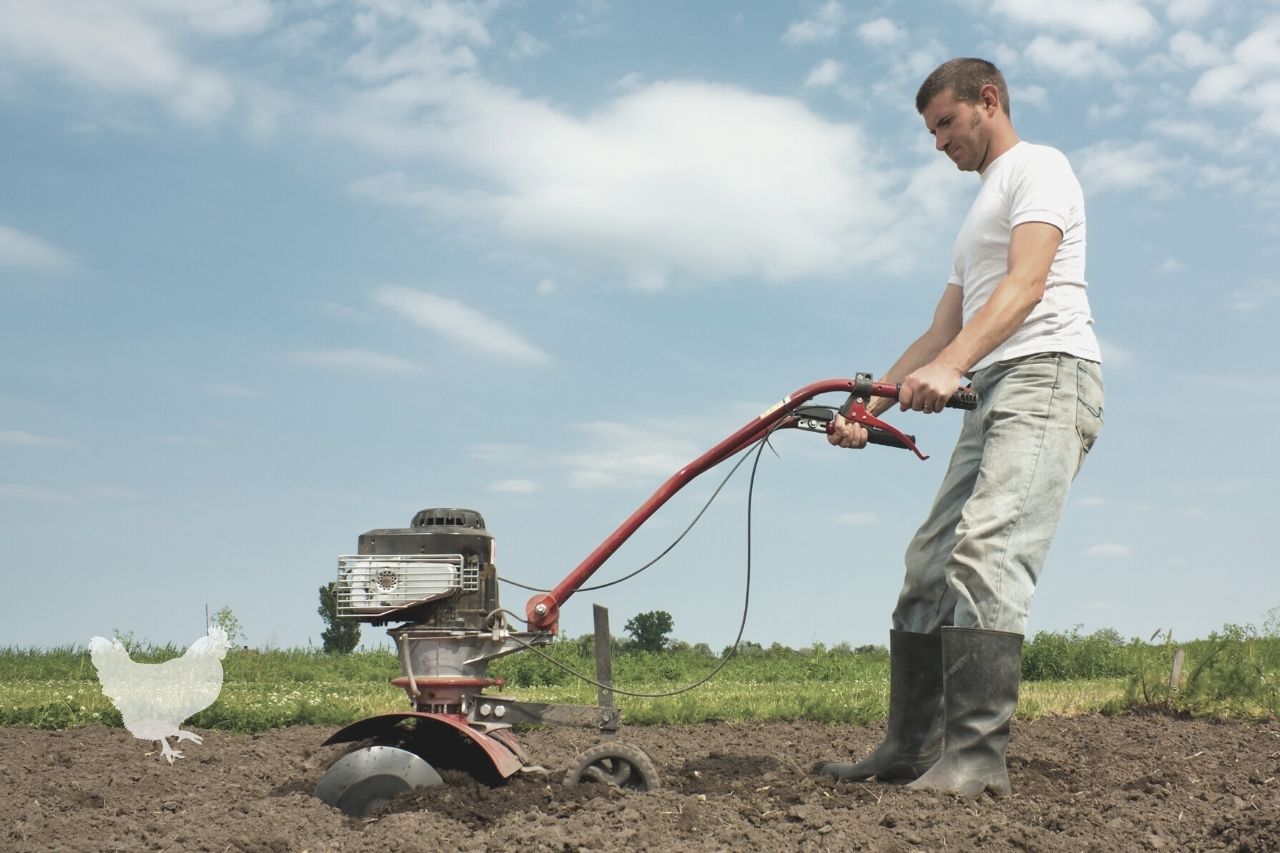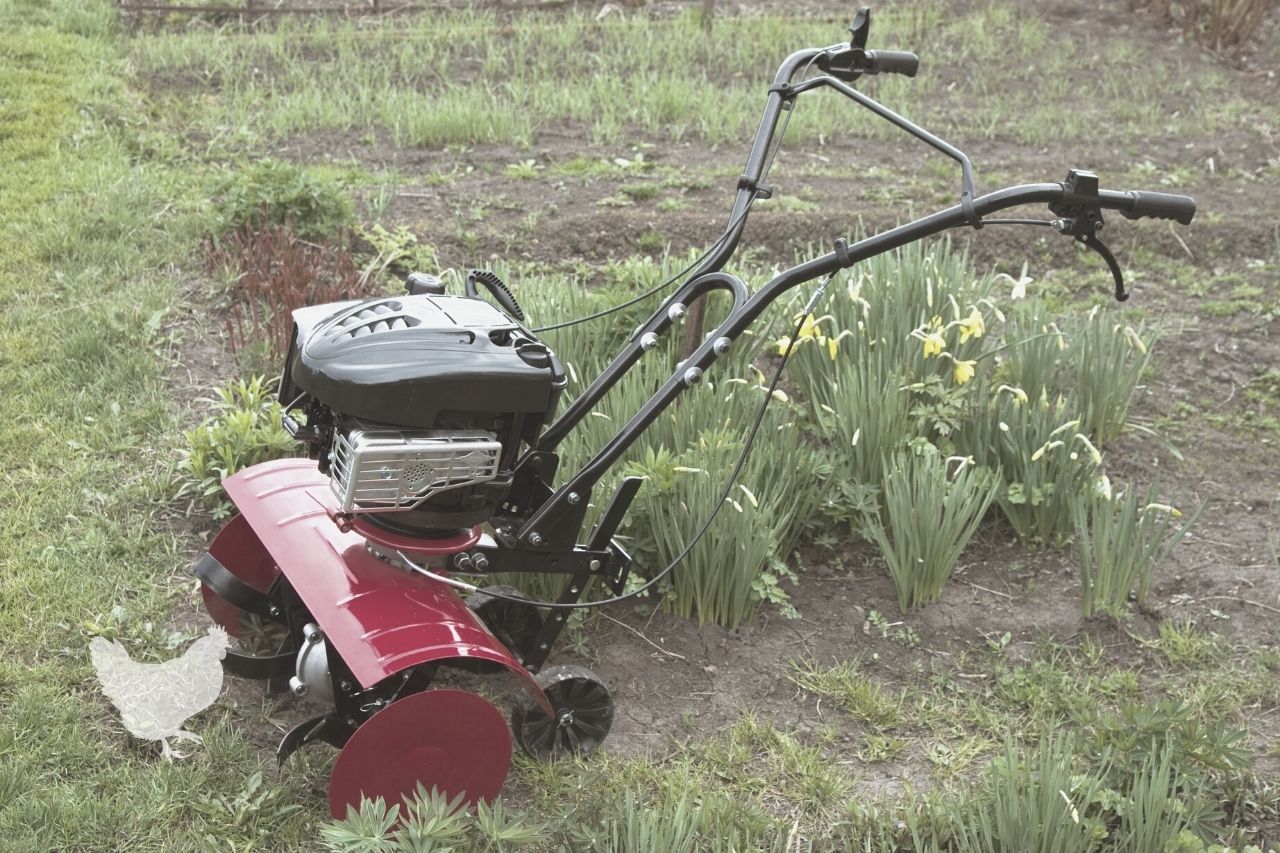To grow a good crop of vegetables, fruits, and grains, you need to get rid of weeds. If the land has been left fallow for a long time, the task may not be easy. A cultivator will make the job easier, but how do you use a cultivator to get rid of weeds?
What You'll Learn Today
Can A Cultivator Remove Weeds?

Well, the answer to this is yes and no. A tiller used correctly at the right time can help illuminate weeds, but used incorrectly at the wrong time may worsen the problem.
You see, many weed species are true survivors. They are often perennial plants that come up year after year and have a very clever root system that, when chopped up into lots of tiny pieces, results in each of those little pieces growing into new plants. Not ideal!
Also, using a cultivator on the land at the wrong time of year will spread seeds and make it easier for seedlings to grow.
There are various things to consider to make your endeavors more successful. These include:
- When to use a cultivator
- What to do before using a cultivator
- The best weather conditions for using a cultivator
When to use a cultivator/tiller
Spring and fall are the most common times of year. In the spring, any seeds present in the topsoil will have just started to sprout. These young weeds are relatively easy to kill by chopping them up and burying them using a cultivator. They will then decompose and add some humus and nutrients to the soil.
In late fall or even early winter, you can use a cultivator to turn any remaining crop debris into the soil, again adding humus and nutrients. ,
It is preferable not to use a cultivator in the summer as plants are getting fully established unless you want to clear paths between rows in a vegetable plot to keep it clear.
In this video, you can see the best type of cultivator to use for weeding between plant rows without causing damage to your young vegetables:
During deep winter, the ground conditions are likely to be bad, and the soil will either be wet or frozen, which is not a good time for using a cultivator.
What to do before using a cultivator
Be very careful not to spread seeds. Some seeds are always naturally present in the topsoil, but you don’t want to compound the problem further by accidentally adding even more. If there are any plants with seed heads, remove them first.
If you have large, deep-rooted weeds on the land, they can be difficult for a cultivator to manage and should be pulled up by hand before using the cultivator. This also applies to any saplings.
Other things that can affect a cultivator include tree branches, rocks, endeavors, or other debris that may be on or in the soil. This will require clearing as much as possible before you start.
The best weather conditions for using a cultivator
The perfect conditions are when the soil is moist but not wet. This is another reason why spring and fall are usually the best times of the year. Dry or frozen soil is too hard, and the muddy ground will gum up the cultivator, make a huge mess, and cause compaction.
Soil with a crumbly texture is the easiest to work with. However, it can become compacted in areas with heavy traffic from people, animals, or vehicles. It may be more challenging to manage if the moisture level isn’t just right.
Removing a dense weed covering can be helpful, too, as it will allow the soil to get air and sunlight, preventing it from being too wet.
How To Use A Cultivator To Remove Weeds?

Depending on the type of cultivator you will be using, there are some things you will need to do:
- Use appropriate protective clothing
- Check your cultivator is safe and ready for work
- Adjust the depth settings on the cultivator
- Ensure you are covering the entire area as you go along
Protective Clothing
When using any type of machinery, appropriate safety gear must be worn, including footwear, clothing, gloves and face protection. Boots with steel toecaps are a good idea, as well as long, sturdy trousers, a long-sleeve shirt, and work gloves.
You should wear eye protection and preferably a face shield on your face, as the machine can throw up clods of mud and stones at relatively high speed.
Also, remember that soil contains bacteria and other organisms that can be hazardous to health.
Machine maintenance
Good machine maintenance is essential for safety. Whether you are using a hand-driven mechanical cultivator or a tractor-operated one, make sure that your cultivator is properly cleaned and serviced before use.
Cultivator settings
Some cultivators can be adjusted for depth. If you need to till deeply, then it can sometimes be easier to go over the ground on a shallower setting first, depending on the state of the soil.
If you only have a covering of young spring weeds, then a light tilling will probably be sufficient, so pay attention to the depth setting.
Covering the whole area
As you use the cultivator, ensure that you are going over the entire area in a methodical way. The best way of achieving this is to strip it in strips up and down, ensuring you don’t miss any patches as you go.
Leaving bits not turned over could cause you problems later on.
As you start each new row, ensure that the blades of the cultivator dig themselves into the ground before you move forwards.
Going over your land in a single pass won’t do a sufficiently good job. It takes several passes going over the ground, again and again, to ensure it is fully covered.
Always ensure you familiarise yourself with how your cultivator works and read all of the information provided in the manual before using it. This can help prevent a serious accident, as tillers can be dangerous machines if misused.
Which Cultivator/Tiller Is Best For Weed Control and Removal?
The names cultivator and tiller are often used interchangeably, but they are really different tools that do a similar job of breaking up and turning over the soil. But which is best for weed control and removal?
In spring, a tiller is generally used to prepare the ground for the new growing season. They are then often used again at the end of the year to turn the leftover plant matter back into the soil, where it can decompose and add nutrients.
Tillers generally reach a depth of around 8 inches, while cultivators work at a shallower level.
Cultivators are more commonly used to maintain weed control between plants during the growing season. The turning over of the ground helps keep weeds at bay and aerates the soil allowing fertilizers and water to penetrate more deeply.
It is possible to buy machines that do both jobs, or if you prefer just spend out money on a single machine, tractor-operated, get the one which will be used more frequently. You might find it simpler to rent a tiller to use twice a year.
Can You Use a Cultivator to Remove Grass?

You can use a tiller to remove grass, although a cultivator may not give such a good result as many cannot dig down deep enough to get right down to the base of the roots.
How to use a tiller to remove grass
The roots of some grass species can grow quite deeply, and it will likely take several attempts with a tiller to get the job done well. If there are any very large grass clumps or tall, fibrous weeds, these will need to be removed first.
- You’ll also need to clear the ground of any other obstructions such as rocks, branches, and so on.
- Choose a day when the land is damp, not dry, and not wet. Dry soil is too difficult to till effectively, and wet ground just turns into mud.
- Choose the right size tiller for the size of the job. You won’t effectively till large fields with a hand-held tiller as it is too exhausting. You will likely need something with tractor power for larger jobs.
- Prepare the tiller by adjusting it to the desired depth and checking it is in a serviceable condition.
- Wear protective clothing, as we discussed earlier above.
- Never leave a running machine unattended, even for a moment.
- As you start each row, ensure that the tiller is digging well into the grass. You can help this by using the clutch lever to get the tiller to dig in in place before you start moving.
- Keep the lines as straight as possible to ensure you aren’t missing any areas.
Conclusion
You’ll need a cultivator or tiller that is up to the job you want to do. Although buying a cheap one may seem like a good idea, it is often not the best solution if you want the best job.
Mid-price-range cultivators generally have a reasonable level of depth adjustments and enough power to turn over a medium-sized vegetable patch without too much difficulty.
Cultivators are helpful not only for preparing your land for the new season but with regular use for maintaining it, keeping it weed-free throughout the growing period.
You can find cultivators in garden stores, or online at specialist retailers, or even Amazon.
Ensure that the soil conditions are right before you decide to start using a cultivator and keep it well maintained.
Always use appropriate safety equipment!